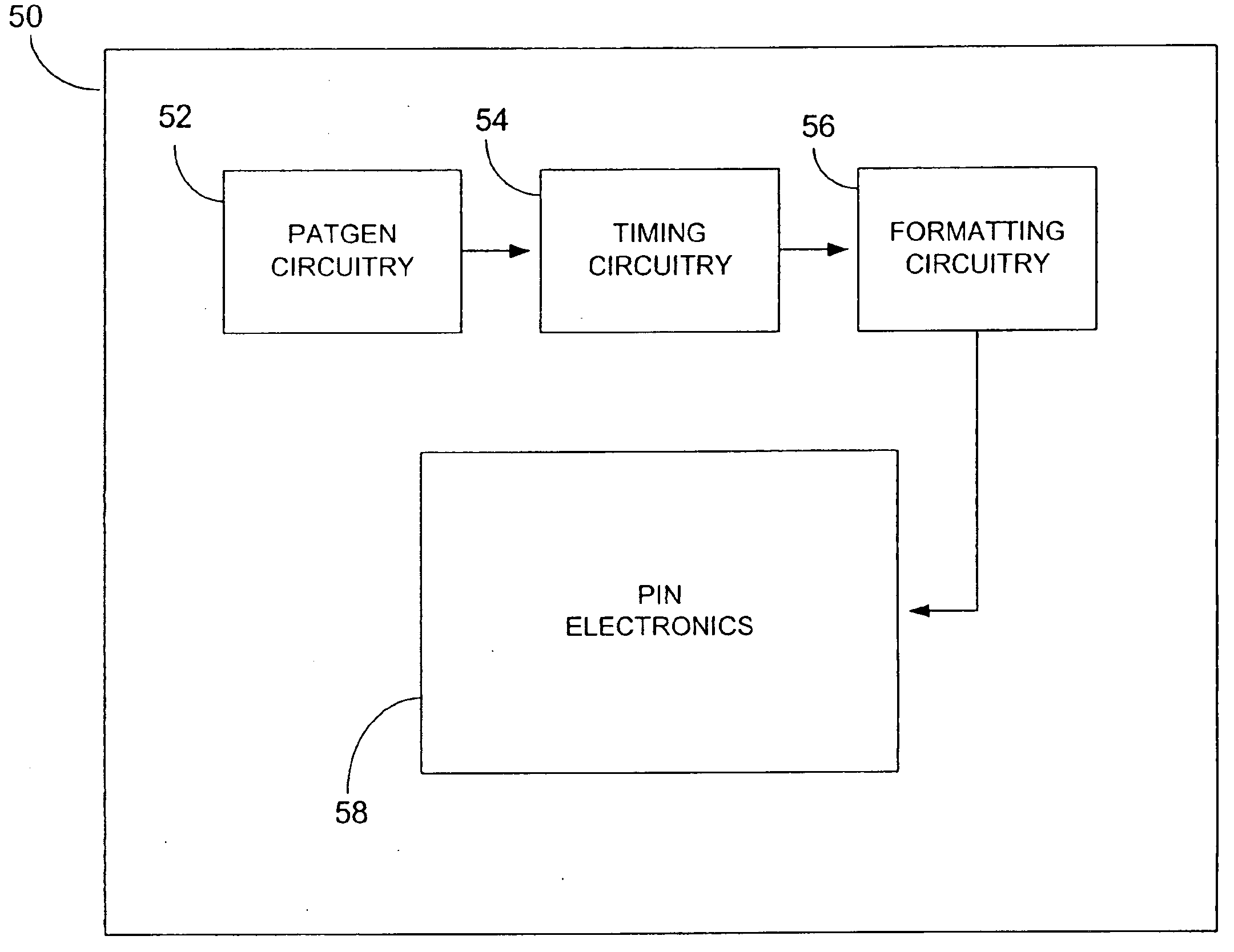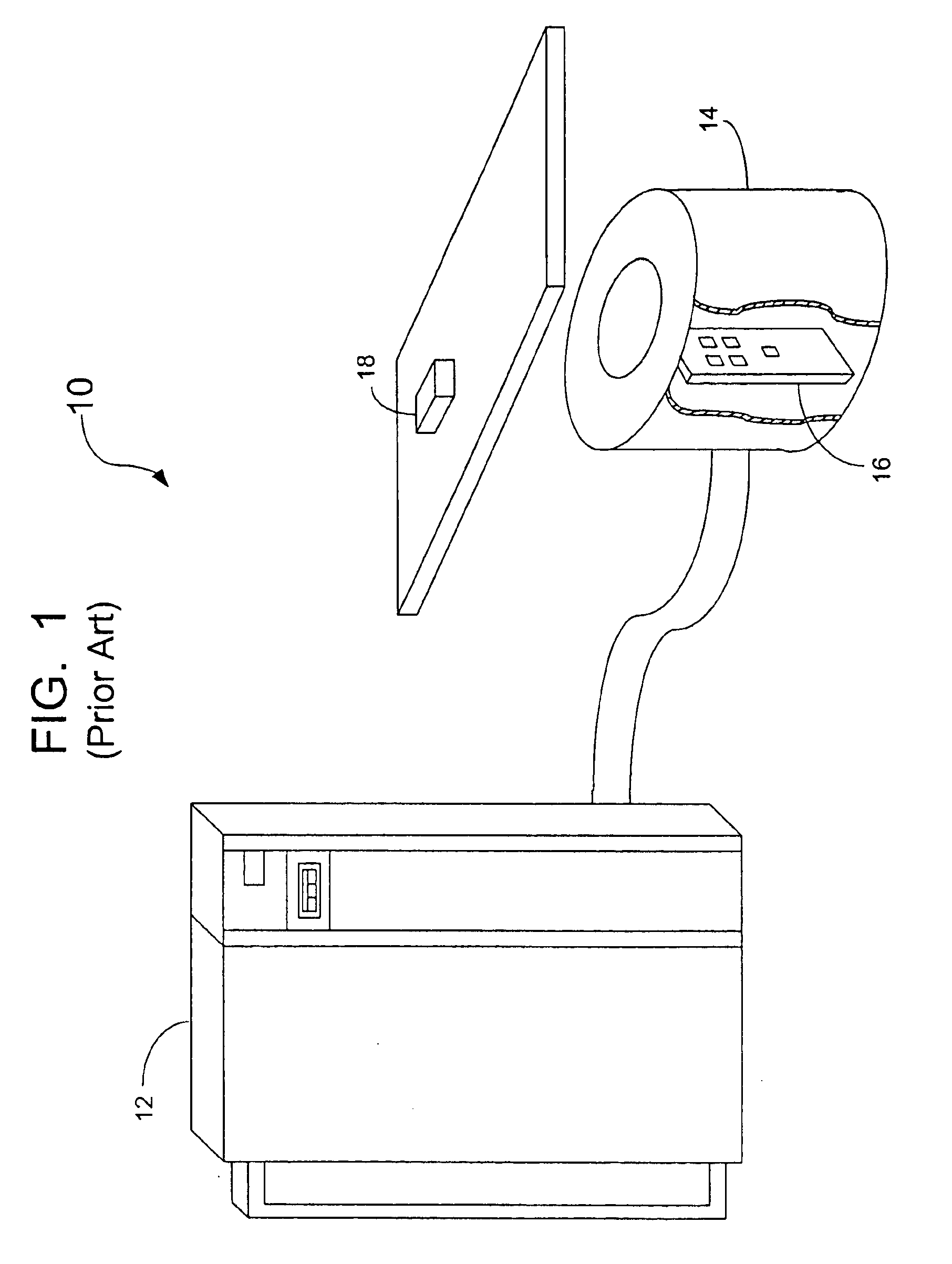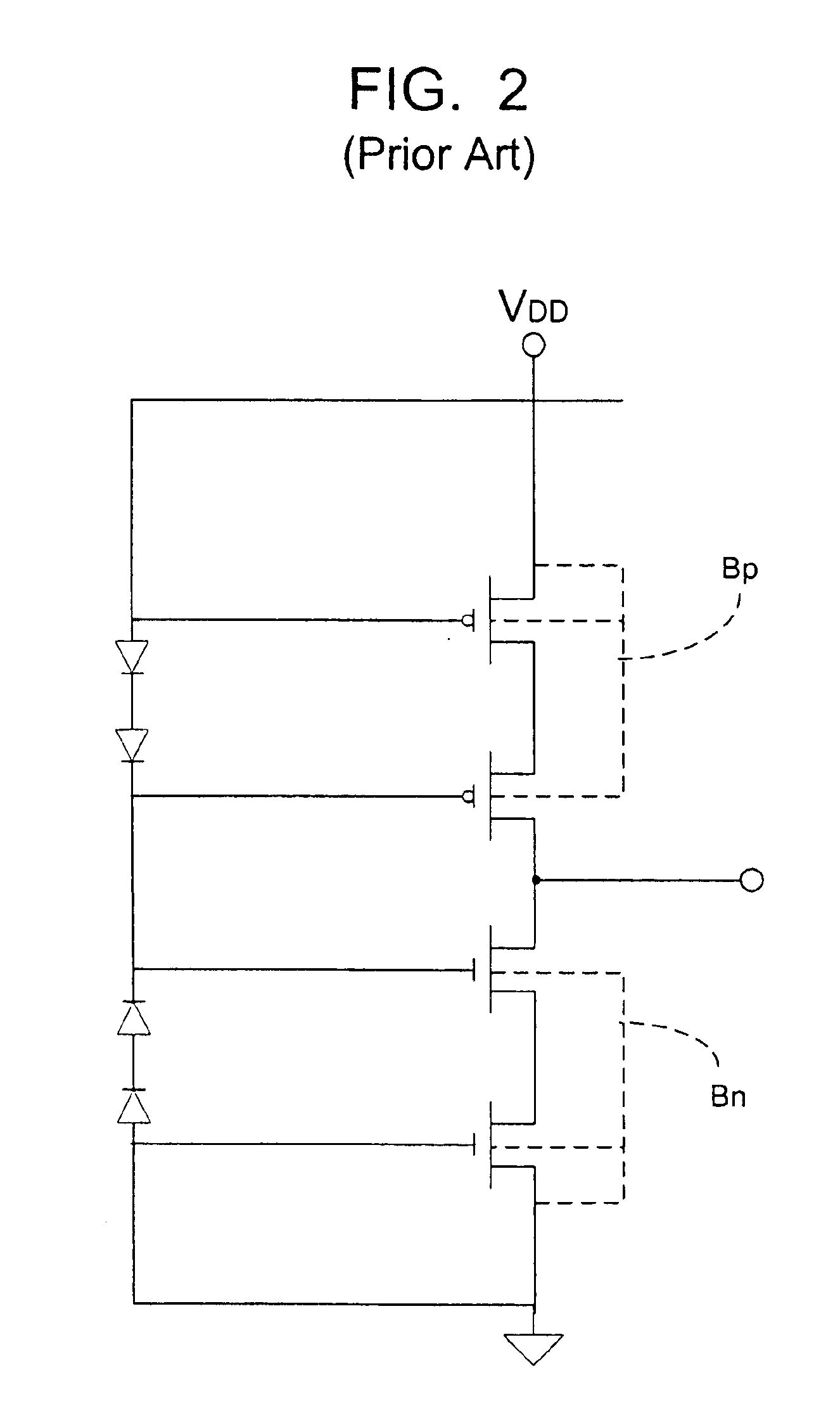Silicon-on-insulator channel architecture for automatic test equipment
a silicon-on-insulator and automatic test technology, applied in the direction of resistance/reactance/impedence, measurement devices, instruments, etc., can solve the problems of increasing the pin count of modern semiconductor devices, expensive filtering systems, and large and/or higher channel cards. achieve the effect of sacrificing performan
- Summary
- Abstract
- Description
- Claims
- Application Information
AI Technical Summary
Benefits of technology
Problems solved by technology
Method used
Image
Examples
Embodiment Construction
The channel architecture described herein provides a way to combine relatively high voltage and low voltage circuits on the same integrated circuit chip without incurring undesirable performance degradation. This is accomplished by forming the various circuits in accordance with silicon-on-insulator process technology.
FIG. 3 illustrates a basic stacked CMOS inverter array suitable for use in the channel architecture described herein, and enabled by the use of a silicon-on-insulator (SOI) process. The inverter array includes a pair of p-channel transistors QP1 and QP2 disposed in series between a source voltage VDD and a pair of n-channel transistors QN1 and QN2. The node formed by the connection of the p-channel and n-channel transistors forms the inverter output OUT. An array of diodes D1-D4 coupled to the gates of the p-channel and n-channel transistors and the source voltage VCC provide voltage inputs of differing levels. The n-channel transistors are configured to complement the...
PUM
 Login to View More
Login to View More Abstract
Description
Claims
Application Information
 Login to View More
Login to View More - R&D
- Intellectual Property
- Life Sciences
- Materials
- Tech Scout
- Unparalleled Data Quality
- Higher Quality Content
- 60% Fewer Hallucinations
Browse by: Latest US Patents, China's latest patents, Technical Efficacy Thesaurus, Application Domain, Technology Topic, Popular Technical Reports.
© 2025 PatSnap. All rights reserved.Legal|Privacy policy|Modern Slavery Act Transparency Statement|Sitemap|About US| Contact US: help@patsnap.com



